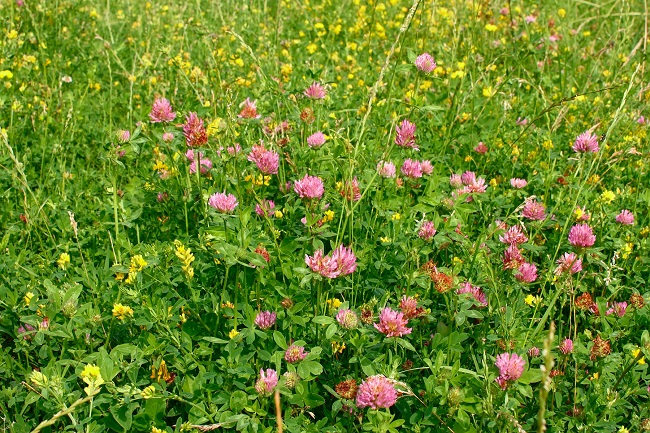Cover crops are fast-growing small grains, grasses or legumes that are generally planted in the fall and tilled under in the spring to improve soil. Cover crops are used to increase the amount of organic matter in the soil, prevent erosion, fix nitrogen in the soil, reduce the number of weeds in the garden and provide habitat for beneficial insects. The specific needs of the soil and the results you wish to achieve will determine which cover crops should be grown to improve the soil in your garden.

Cover crops that are tilled in to improve the condition of soil are sometimes referred to as green manure. Legumes such as mammoth red clover, crimson clover, hairy vetch, or bell beans will fix nitrogen in the soil while adding organic matter when they are tilled under in the spring.
New Zealand White Clover, also known as Dutch White Clover, is a low-growing legume that can be planted between rows as a living mulch. This multi-tasking cover crop will provide a nice path between the rows for you to walk on while it keeps weeds down and adds nitrogen to the soil and its flowers will attract pollinators to your garden. The following spring, the clover can be tilled under and crops planted where the clover had been. Replant the clover in the rows where crops were grown the previous year for a simple form of crop rotation.
When fast-growing winter rye is planted in the fall, it quickly covers the ground and crowds out any weeds that otherwise would gain a foothold on bare ground in the fall. The roots survive the winter cold and the plants begin to grow again early in the spring, preventing early weeds from becoming established. Tilling under the rye in the spring will increase the organic matter in the soil, leaving the garden bed with fewer weeds and ready for planting about three weeks after it is tilled in.
Winter rye and hairy vetch are cover crops that work well together. While the rye shades out weeds and actually prevents weed seeds from germinating, the vetch fixes nitrogen in the soil. Vetch’s deep tap roots also help loosen and improve soil.
Buckwheat is an excellent cover crop that is planted in summer. Plant buckwheat where early vegetable crops have already been harvested, or in a spot that has become overwhelmed by weeds. Till the soil before broadcasting the buckwheat seeds; they will quickly germinate and prevent weeds from taking over again. Buckwheat cover crops are tilled under before the plants go to seed. Buckwheat grows and flowers in only six weeks and it also adds calcium, phosphorus and potassium to improve the soil.
Cover crops that have blossoms, such as hairy vetch, yellow sweet clover, crimson clover, and buckwheat, will attract beneficial insects to the garden where they will help pollinate your plants and attack damaging insects.
Leaving bare soil in the garden is an open invitation for weeds to come in, but planting cover crops will help make your garden a private party for your plants. You can find seeds for these cover crops and others at farm supply or feed stores and online. Some seed catalogs also offer a selection of seeds for cover crops.
Mike McGroarty is a Garden & Greenhouse contributing editor, the owner of McGroarty Enterprises and the author of several books. You can visit his website at Freeplants.com and read his blog at Mikesbackyardnursery.com.
Related Articles & Free Email Newsletter Sign Up
Quick and Easy Ways to Divide Perennial Plants




Comment here